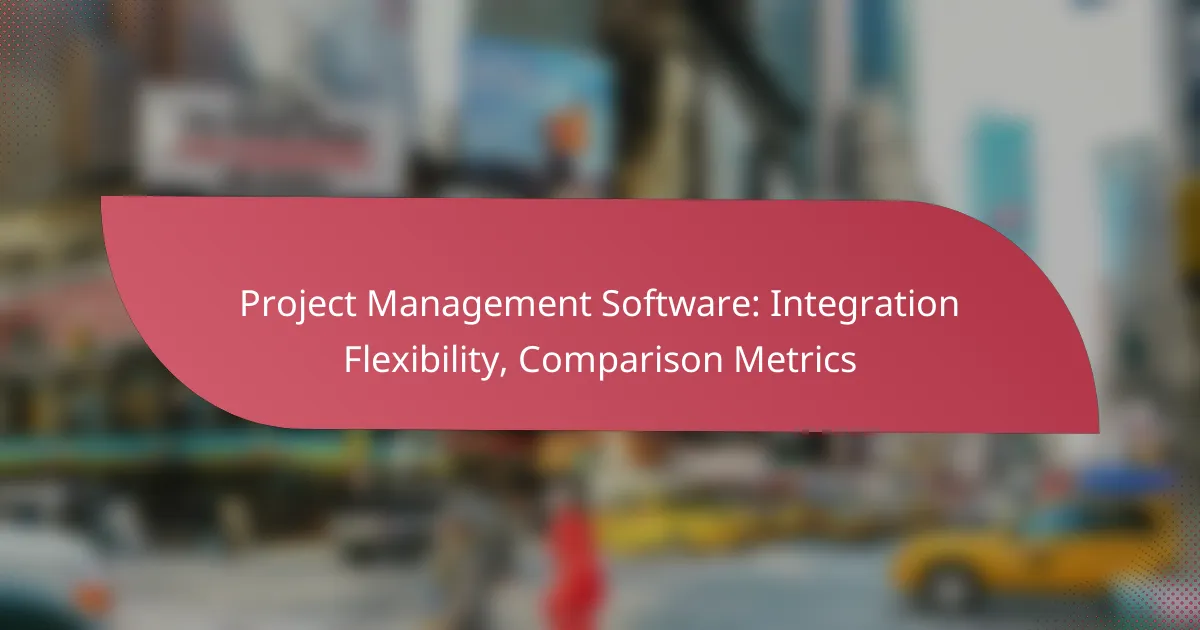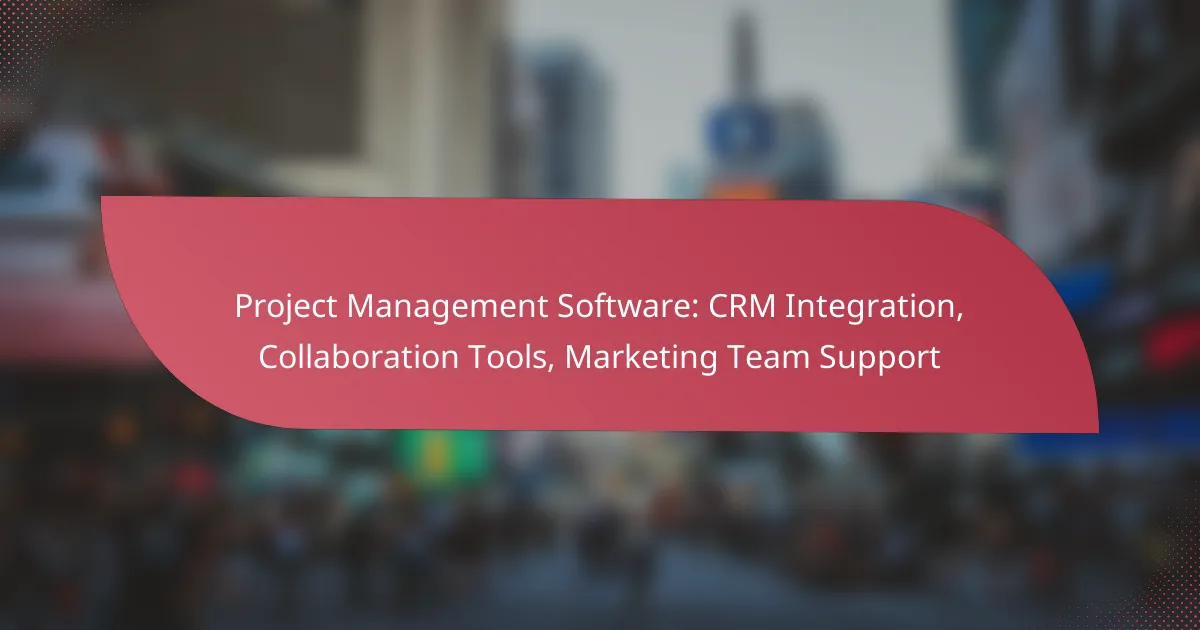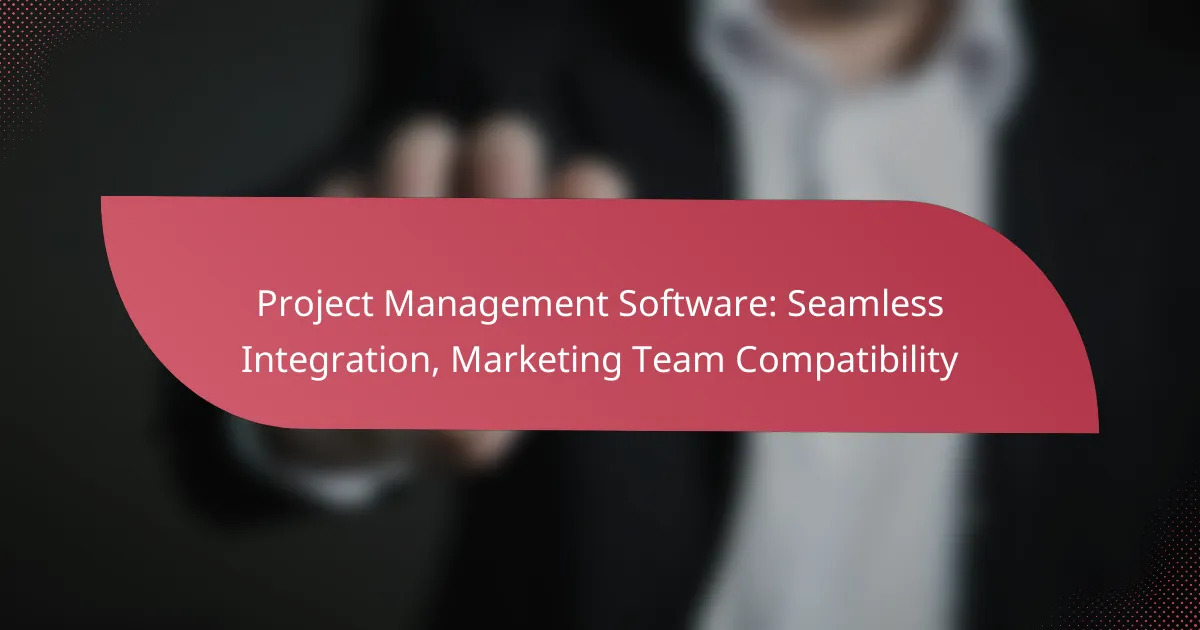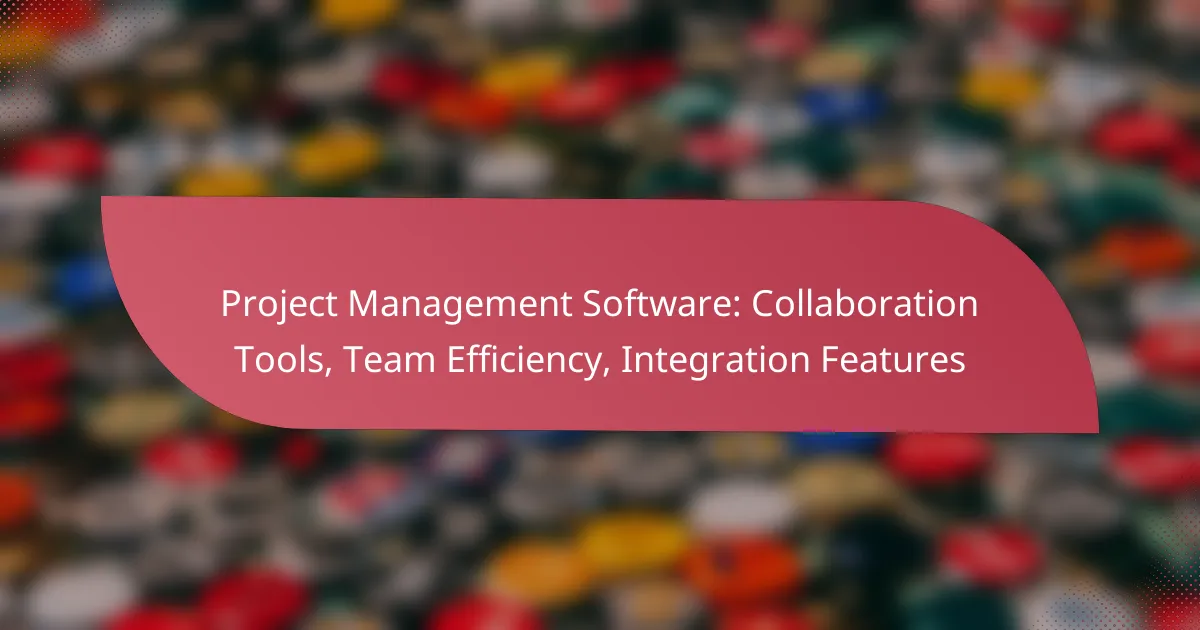In today’s fast-paced work environment, the best project management software offers integration flexibility, allowing teams to connect seamlessly with various tools and platforms. This adaptability not only enhances workflow efficiency but also enables users to tailor their project management experience to meet specific requirements. When comparing software options, it’s essential to consider factors such as API availability, support for third-party applications, and user satisfaction ratings to ensure a solution that delivers both value and effectiveness.
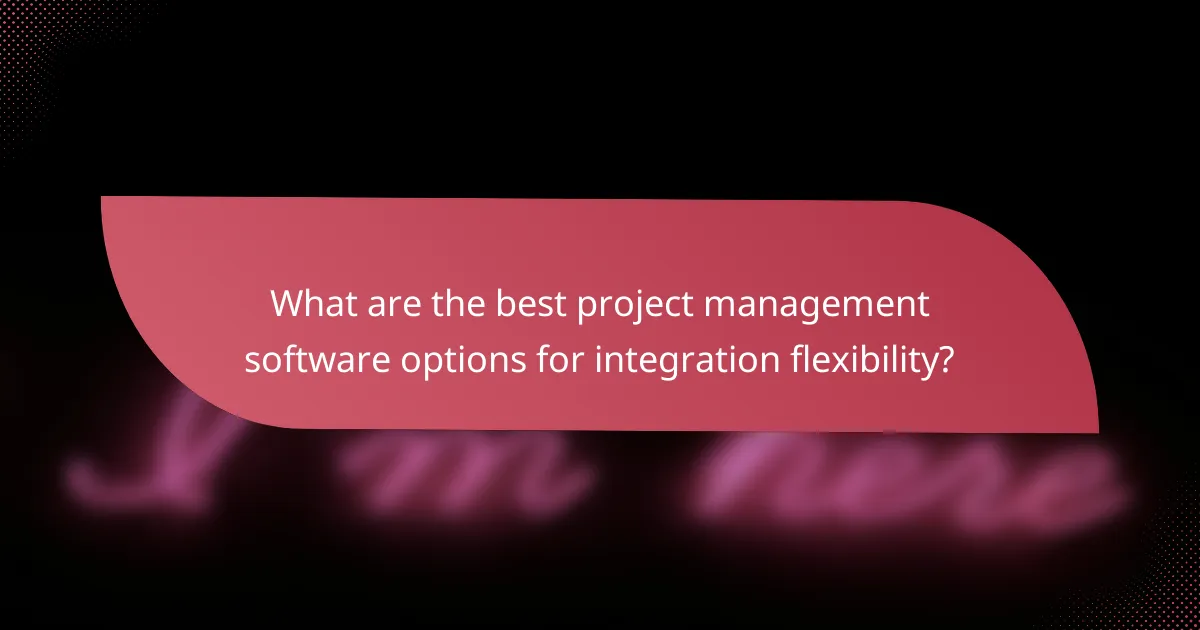
What are the best project management software options for integration flexibility?
The best project management software for integration flexibility allows users to connect with various tools and platforms seamlessly. This capability enhances workflow efficiency and ensures that teams can customize their project management experience according to their specific needs.
Asana
Asana offers robust integration options with over 200 applications, including Slack, Google Drive, and Microsoft Teams. This flexibility enables teams to streamline communication and file sharing directly within their project management environment.
When using Asana, consider leveraging its API for custom integrations if your team relies on niche tools. This can enhance your project workflows significantly, but ensure your team has the technical expertise to implement these solutions effectively.
Trello
Trello is known for its user-friendly interface and flexibility, integrating with numerous applications like Zapier, Google Drive, and Dropbox. These integrations allow users to automate tasks and manage projects more efficiently.
To maximize Trello’s integration capabilities, explore Power-Ups, which are add-ons that enhance functionality. However, be mindful of the limitations on the number of Power-Ups available per board unless you opt for a paid plan.
Monday.com
Monday.com provides extensive integration capabilities with tools such as Zoom, Slack, and Google Workspace, making it a versatile choice for teams. Its visual interface helps users quickly set up and manage integrations without extensive technical knowledge.
When implementing integrations on Monday.com, focus on automating repetitive tasks to save time. However, be cautious of overcomplicating workflows with too many integrations, as this can lead to confusion among team members.
ClickUp
ClickUp stands out with its wide range of integrations, including GitHub, Google Calendar, and Outlook. This flexibility allows teams to centralize their project management and communication tools in one platform.
Utilizing ClickUp’s integration features can significantly enhance productivity, but ensure that your team regularly reviews and updates these connections to maintain efficiency and relevance to current projects.
Wrike
Wrike offers strong integration options with applications like Salesforce, Microsoft Teams, and Dropbox, catering to diverse project management needs. This flexibility is particularly beneficial for larger teams that require collaboration across various departments.
To get the most out of Wrike’s integrations, consider setting up automated workflows that align with your team’s processes. However, keep an eye on user permissions and access levels to ensure data security across integrated platforms.
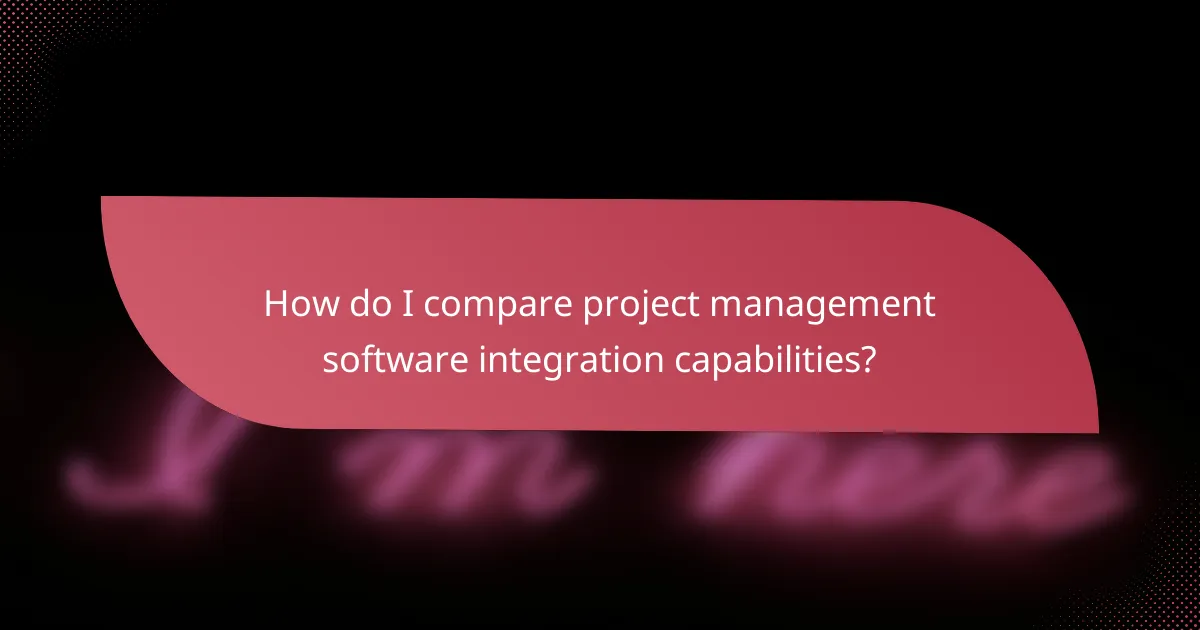
How do I compare project management software integration capabilities?
To compare project management software integration capabilities, focus on how easily the software connects with other tools and systems. Key factors include API availability, support for third-party applications, and options for custom integrations.
API availability
API availability is crucial for seamless integration between project management software and other applications. A robust API allows developers to connect different systems, automate workflows, and enhance data exchange. Look for software that offers well-documented APIs, as this will simplify the integration process.
When evaluating API capabilities, consider the types of data that can be accessed and manipulated. Some software may provide RESTful APIs, while others might use SOAP. Assess your team’s technical expertise to determine if they can effectively utilize the available API options.
Third-party app support
Third-party app support refers to the software’s ability to integrate with external applications commonly used in project management. This can include tools for time tracking, communication, file sharing, and reporting. A wide range of supported apps can enhance the overall functionality of your project management software.
Check the software’s marketplace or integration directory to see which third-party applications are available. Popular integrations often include Slack, Google Drive, and Trello. Ensure that the software supports the specific tools your team relies on to avoid compatibility issues.
Custom integration options
Custom integration options allow organizations to tailor the project management software to their unique workflows and systems. This flexibility can be vital for businesses with specific needs that off-the-shelf integrations cannot meet. Look for software that offers customizable workflows or the ability to create bespoke integrations.
When considering custom integration, evaluate the level of support provided by the software vendor. Some vendors may offer professional services to assist with custom development, while others may provide tools for in-house teams to create integrations. Assess your budget and resources to determine the best approach for your organization.

What metrics should I use to evaluate project management software?
To evaluate project management software effectively, focus on user satisfaction ratings, cost-effectiveness, and feature set comparison. These metrics provide a comprehensive view of how well a software solution meets user needs and delivers value.
User satisfaction ratings
User satisfaction ratings reflect how well the software meets the expectations of its users. Look for reviews and ratings on platforms like G2 or Capterra, where users share their experiences. A high average rating, typically above four stars, indicates a generally positive reception.
Consider the volume of reviews as well; a software with hundreds of reviews may provide a more reliable picture than one with only a few. Pay attention to comments regarding usability, customer support, and overall experience to gauge satisfaction levels.
Cost-effectiveness
Cost-effectiveness measures the value you receive relative to the price paid for the software. Compare subscription plans, which can range from monthly fees in the low tens to hundreds of USD, depending on the features offered. Look for free trials or tiered pricing to assess value before committing.
Evaluate what features are included at each price point. Sometimes, a higher upfront cost can lead to long-term savings if it reduces project delays or improves team productivity. Be wary of hidden fees that could inflate the total cost.
Feature set comparison
Feature set comparison involves analyzing the capabilities of different project management tools. Key features to consider include task management, collaboration tools, reporting capabilities, and integrations with other software. Create a checklist of must-have features versus nice-to-have ones to guide your evaluation.
Utilize comparison charts available online to visualize differences between software options. This can help you quickly identify which tools align best with your project requirements. Prioritize tools that offer flexibility in integrations, as this can enhance overall functionality and workflow efficiency.

What are the integration challenges with project management software?
Integration challenges with project management software often stem from data migration, compatibility with existing tools, and the learning curve for teams. Addressing these issues is crucial for ensuring a smooth transition and maximizing the software’s effectiveness.
Data migration issues
Data migration issues arise when transferring information from one system to another, often leading to data loss or corruption. It’s essential to plan the migration process carefully, including data mapping and validation steps, to ensure that all critical information is accurately transferred.
Common pitfalls include neglecting to back up data before migration and failing to test the new system thoroughly. Using automated tools can help streamline the process and reduce errors, but manual checks are still advisable.
Compatibility with existing tools
Compatibility with existing tools is a significant challenge when integrating project management software. Many organizations rely on various applications for communication, file sharing, and reporting, and ensuring that the new software works seamlessly with these tools is vital.
Before selecting software, evaluate its integration capabilities with your current tools. Look for software that offers APIs or pre-built integrations with popular applications to minimize disruption and enhance productivity.
Learning curve for teams
The learning curve for teams can hinder the successful adoption of new project management software. Employees may struggle to adapt to unfamiliar interfaces or processes, which can lead to decreased productivity during the transition period.
To mitigate this, provide comprehensive training sessions and ongoing support. Consider using user-friendly software that offers intuitive design and resources such as tutorials or help centers to facilitate quicker learning and adaptation.

How do I select the right project management software for my team?
Selecting the right project management software involves understanding your team’s specific needs and the features that best support those requirements. Consider factors such as team size, budget, and the types of projects you manage to make an informed decision.
Assess team size and needs
Your team’s size and specific needs are critical in choosing project management software. A small team may benefit from simpler tools that focus on task management, while larger teams might require more robust solutions with advanced features like resource allocation and reporting.
Consider the types of projects your team handles. For instance, if your projects involve multiple stakeholders or require extensive collaboration, look for software that offers strong communication features and integration capabilities with other tools.
Evaluate budget constraints
Budget plays a significant role in selecting project management software. Prices can vary widely, from free tools with limited features to premium solutions that can cost hundreds of dollars per month. Determine your budget range early on to narrow down your options effectively.
Keep in mind that some software may offer tiered pricing based on the number of users or features. Assess whether the investment aligns with the expected return in productivity and efficiency. It’s often wise to consider trial versions to gauge the software’s value before committing financially.
